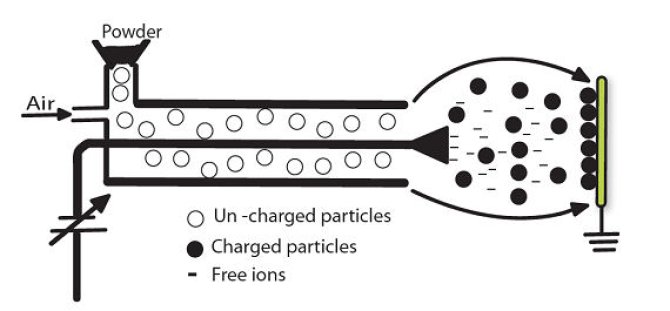Project
Electrostatic coating of foods
Food quality and shelf-life is strongly affected by coating of foods. It determines the exquisite taste, e.g. seasoning of snacks with herbs and spices, or it creates a protective moisture barrier, e.g. a fat barrier to maintain the crispiness of a cookie. Depending on the desired functionality, a powder or liquid formulation is applied. Besides the coating formulation, coating procedure is also critical for the final quality of the coating layer, e.g. in terms of homogeneous distribution, thickness, and porosity. Conventional coating methods often results in poor surface distribution of coating material and are very much challenged by irregular surfaces. The solution is usually excess application of coating material in order to create a thick moisture barrier. Further, conventional coating methods are known to have poor transfer efficiency, which also increases the amount of coating material needed. An attractive alternative to conventional coating techniques could be electrostatic coating, which has proven its value for non-food products (e.g. application of paint in the automotive industry), but has very limited penetration in the food industry.
In this project, depending on type of coating formulation, different electrostatic coating technologies will be applied.
Electrostatic charging of (dry) powders is usually based on corona charging; using aerodynamic and electrostatic forces, powder particles are accelerated to the target surface (Bailey, 1998). This method provides evenly coated and homogeneous monolayers on surfaces. Within our research, the focus will be on efficiency of distribution of ingredients like seasoning (salt, spices, colors), or specific powdered ingredients to avoid caking of foods.

Corona charcing of powders
Spraying of liquids can be achieved through electro hydrodynamic atomization that utilizes electrical forces to overcome the surface tension and thus break up liquid into very small droplets. These droplet may be as small as 100 nm, which can provide very thin (±30 µm) and homogeneous coatings. This technology will also be explored as a method for building nanostructures and micro/nano-encapsulates.Reference:
Bailey AG. 1998. The science and technology of electrostatic powder spraying, transport and coating. Journal of Electrostatics 45(2): 85-120.
Acknowledgement
This project is partially funded by Higher Education Commission, Pakistan
